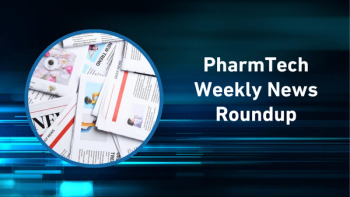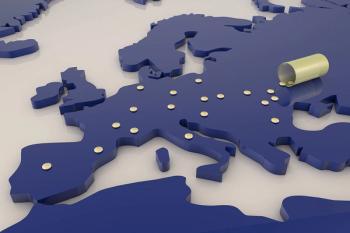
Takeda’s Sriman Banerjee Discusses Smart Packaging at CPHI Frankfurt 2025
Key Takeaways
- Smart packaging technologies, such as QR codes and NFC, enhance patient interaction and adherence in pharmaceuticals.
- These innovations support clinical studies and complex therapeutic regimens by ensuring proper dosing and improving pharmacokinetic outcomes.
Sriman Banerjee of Takeda Pharmaceuticals says patient adherence is improving thanks to technologies that offer a more personalized approach.
As a part of its CPHI Frankfurt 2025 coverage, Pharmaceutical Technology® interviewed
Banerjee gave a keynote address at the conference on Tuesday, Oct. 28, 2025, entitled “The Future of Packaging: How Smart and Connected Technologies Are Enhancing Consumer Interaction.”
The full interview with Banerjee can be viewed
PharmTech: How do smart, connected packaging solutions enhance the consumer experience?
Banerjee (Takeda): If we take a step back here, many of these smart packaging solutions were first introduced in the consumer industry, and then subsequently [they] evolved and took different shapes and forms in the pharmaceutical industry, with the first being introduced as—and if you take again a step back here—there are different levels of smart packaging. Obviously the QR code is something, what we would call an ‘entry level’ of smart packaging, where someone can scan the QR code and it takes them to a web page which can have information, or it can have gamification, or anything of that nature as well.
The second level goes into the NFC [near field communication] technologies, which are, again, used for some of these instances where you can tap, and again, it either takes you to the web page, but NFC also offers a one-way or a two-way communication as well. And obviously, as you progress more, you can have the Bluetooth and the cellular system networks as well. Depending on what you want to achieve, many of these technologies provide different features in some of these elements, including recording features and so on and so forth.
As I was mentioning, many of these things were first evolved in the consumer space and then moved into the pharmaceutical space. In the pharmaceutical space, one of the first instances of use was in the clinical studies, by using smart caps for the clinical study program, where it helped the adherence towards the clinical program in terms of dose taking by the patients and the subjects. And subsequently, again, there were solutions which were found in terms of QR codes connecting to e-leaflets and also providing information about the patient's dosing regimen.
So as things evolved in the pharmaceutical space, smart packaging has been a patient support system, whether it is through adherence or through information, and it has been well received over the last couple of years now.
How can these innovations improve patient adherence?
The way it improves patient adherence is, one, if you take the example of a smart cap, it provides [an] alert to the patients in terms of missed dose or scheduling the time to take doses. It records the dosing. It helps care providers in terms of guiding the patients or dosing the patients at the right time, because we know globally, there is a big population of aging people. So overall, it helps in maintaining adherence in terms of taking the medication on time.
As we progress further, some of these new-age medications or therapeutic areas are complex, which means the dose has to be taken at a particular time. Some of these dosings are also titrated, which means that it is not necessary you do the same dosing every day of the week and so on and so forth. So with some of these complexities in the therapeutic areas, smart packaging actually helps in adherence and guiding the patients.
What takeaways does this provide pharma companies with for the future?
Where this helps, as I said, obviously it helps in the clinical studies. You can very clearly understand which of the subjects have been taking the medications on time. It helps in the PK [pharmacokinetic] studies, in the clinical studies as well, because now you know that if the patient has taken the medication on time, how does it reflect in the efficacy and the safety profile of the drug?
So that is, I would say, one use case in terms of the pharmaceutical industry. The second use case is, again, in terms of complex medications. It enables these types of technologies, enables the pharmaceutical industry to ensure that the efficacy and the safety of the medication is maintained, because in certain cases, you also do not want the patient to be overdosing on something just because that patient might think they might have forgotten to take the medication. So it enables a lot of benefits, I would say, towards the healthcare industry as a whole, and not only impacting whether it's the patient or the pharmaceutical industry. It takes a higher view in terms of the healthcare industry per se, which includes the healthcare professionals, the patients, and the pharmaceutical company.
How do these changes deepen the connection between brands and consumers?
Currently, if we try to see the big picture, pharmaceutical companies have been providing the molecules to the healthcare system, which has been benefiting the patients. However, if you see from an overall patient centricity and product standpoint, technologies including smart packaging actually help in terms of patient engagement, patient adherence, patient understanding, whether it's [an] e-leaflet, or anything of that nature. Therefore, it provides a much more holistic experience to the patients throughout the treatment and the medication journey.
Newsletter
Get the essential updates shaping the future of pharma manufacturing and compliance—subscribe today to Pharmaceutical Technology and never miss a breakthrough.





